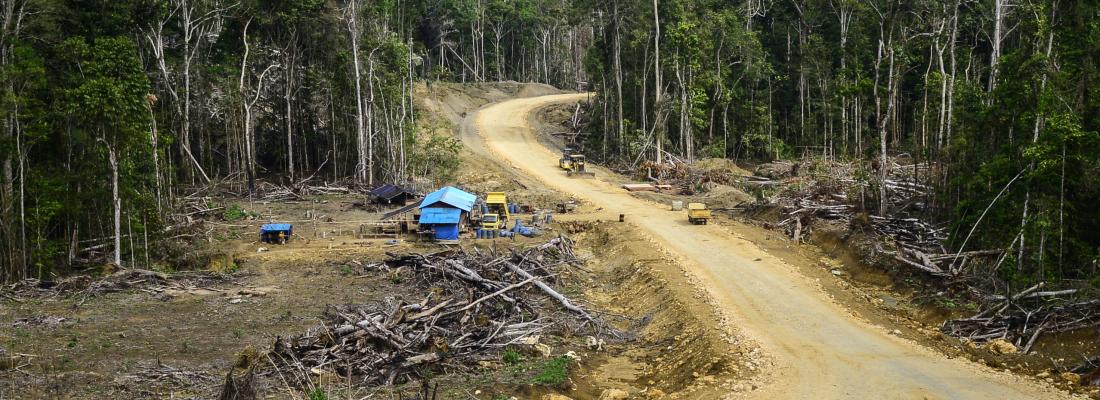Biodiversity Reading time 2 min
Analysis of 65 years of work on the relationships between forests, deforestation and infectious disease emergence
Published on 07 May 2020

Photo : Road construction in west Papua
The SARS-CoV-2 virus responsible for the current COVID-19 pandemic affecting the entire globe seems to have come about from a probable recombination of viruses from two different animal species, one of which is subject to illegal hunting or trade. So, as with numerous other emerging diseases that affect humans, this is a zoonosis, i.e. an infection of animal origin. In intertropical zones which are home to a wide concentration of biological diversity and where societies are still very vulnerable, some human populations are now faced with new health threats from wildlife. By cutting down trees to develop crop and livestock farming, those same communities come into contact with the microbial cycles found in large-scale forest biomes.
For all those reasons, researchers analysed 565 scientific papers that used the terms "forest", "deforestation" and "emerging infectious disease" in their titles and abstracts. They found that only 165 of them actually dealt with the relationships between forests, deforestation and emerging diseases that could provide useful information to the current debate. But how to account for such a gap? The scientists then studied the results in greater detail and concluded that a very large number of the papers actually dealt with an often tiny portion of the infectious cycle, i.e. solely with vector insects or reservoir animals, but much less frequently with their interactions with viruses, bacteria or protozoa. In addition, the vast majority of the articles did not discuss any connections with human cases. In the end, the topic of "forests, deforestation and emerging diseases" was rarely broached, even if a large number of papers stated that in their titles or abstracts. These researchers also noted a taxonomic bias in the articles since a large number of papers had to do with Lyme disease or cutaneous leishmaniasis. Most also referred to work in North America and in Central or South America.
This type of analytical review, now called "research on research", is vital to getting an objective, fact-based overview to guide research in the best way possible. The example discussed here really illustrates the importance of this type of study and highlights the fact that most studies still deal with complex topics in a very sectoral manner even when they have an initial OneHealth approach. Above and beyond that, this study demonstrates the need to broaden our knowledge of the emergence of human infectious diseases and their transmission by taking better account of environmental, and even, anthropological-sociological, economic and political components.
|
Reference Jean-Francois Guégan, Ahidjo Ayouba, Julien Cappelle and Benoit de Thoisy (2020). Forests and emerging infectious diseases: unleashing the beast within. Environmental Research Letters. https://doi.org/10.1088/1748-9326/ab8dd7 |
